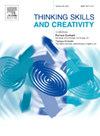通过基于跨学科情境学习法的物理课程实施过程,研究学生在认知和情感方面的变化
IF 3.7
2区 教育学
Q1 Social Sciences
引用次数: 0
摘要
本案例研究探讨了基于跨学科情境学习法的物理课程实施过程中学生在认知和情感方面的变化。研究在2017-2018学年第二学期进行,对象是阿达纳省尤尔吉尔区一所高中十年级一个班的33名学生。在选择学校和班级时,采用了目的抽样法中的标准抽样法。在干预过程中,研究人员使用了基于跨学科情境学习法开发的物理课程。根据基于情境的 REACT 模式编制的计划和活动实施了八周,并使用定量和定性方法收集数据。干预结束后,学生们在将所学知识与日常生活联系起来的能力、跨学科解决问题的技能、解决物理问题的态度以及情感特征等方面都发生了显著变化。在这一过程中,在解决问题、集中精力听课、小组合作、将信息与现实生活和不同学科联系起来等方面遇到困难的学生,通过加强个人努力、与同学和老师交流,克服了这些困难。由于学生在小组合作过程中消极被动、制造噪音和频繁更换座位,研究人员在教学和时间管理方面遇到了一些挑战。为了提高课堂参与度,他们选择了更新教案、准备更多范例和增加直观材料的数量。在这方面,建议教师和其他研究人员分配更多时间开展跨学科情境教学活动,为学生提供更多真实的问题情境,使小组合作多样化,并更频繁地开展小组活动。本文章由计算机程序翻译,如有差异,请以英文原文为准。
Examining the cognitive and affective changes in students through the implementation process of the physics curriculum based on an interdisciplinary context-based learning approach
This case study examines the cognitive and affective changes in students through the implementation process of the physics curriculum based on an interdisciplinary context-based learning approach. The study was conducted during the second semester of the 2017–2018 academic year with 33 students in one of the 10th grade classes of a high school in the Yüreğir district of the Adana province. A criterion sampling method of purposive sampling methods was employed in selecting the school and the class. In the intervention, the researchers used the physics curriculum they developed based on an interdisciplinary context-based learning approach. The plans and activities prepared according to the context-based REACT model were implemented for eight weeks and the data were collected using both quantitative and qualitative methods. At the end of the intervention, significant changes were observed in the students’ ability to relate their knowledge to daily life, interdisciplinary problem-solving skills, attitudes towards problem-solving in physics, and affective characteristics. During the process, students who encountered challenges in problem-solving, focusing on the lesson, working in groups, and relating information to real-life and different disciplines managed to overcome these challenges by increasing their individual efforts and communicating with their peers and the teacher. Because of students who remained passive, made noise, and frequently changed their seats during group work, the researchers encountered some challenges in instruction and time management. To increase classroom participation, they opted for updating the lesson plan, preparing additional examples, and increasing the number of visual materials. In this respect, teachers and other researchers are recommended to allocate more time to interdisciplinary context-based teaching activities, provide students with more real-life problem situations, diversify group work, and conduct group activities more frequently.
求助全文
通过发布文献求助,成功后即可免费获取论文全文。
去求助
来源期刊

Thinking Skills and Creativity
EDUCATION & EDUCATIONAL RESEARCH-
CiteScore
6.40
自引率
16.20%
发文量
172
审稿时长
76 days
期刊介绍:
Thinking Skills and Creativity is a new journal providing a peer-reviewed forum for communication and debate for the community of researchers interested in teaching for thinking and creativity. Papers may represent a variety of theoretical perspectives and methodological approaches and may relate to any age level in a diversity of settings: formal and informal, education and work-based.
 求助内容:
求助内容: 应助结果提醒方式:
应助结果提醒方式:


